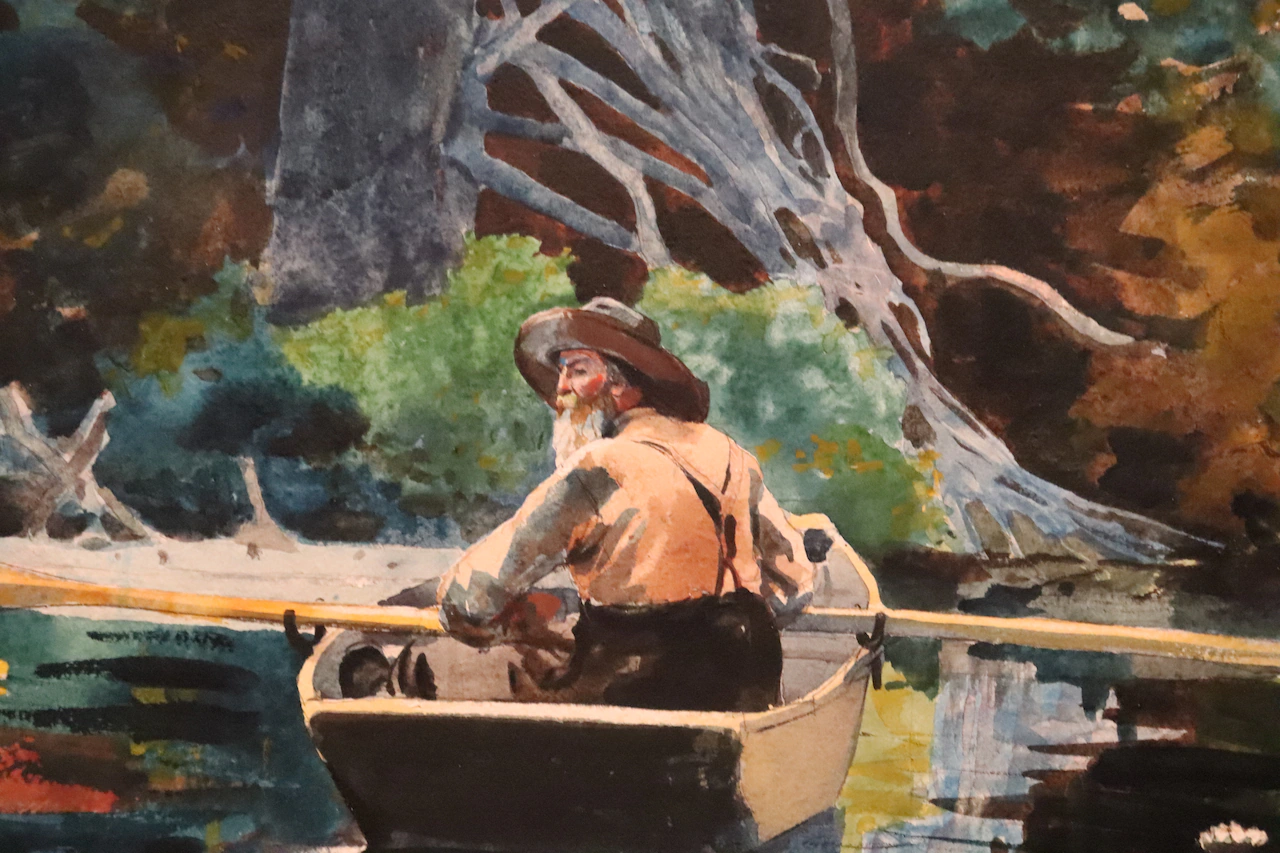Copyright MassLive

For the first time in nearly 50 years, the Museum of Fine Arts, Boston (MFA) is celebrating acclaimed New England painter Winslow Homer with a limited-time art exhibition showcasing the artist’s seldom-seen watercolors alongside his oil paintings and sketches. Homer, who called areas of New England home in the 19th and early 20th centuries, is best known for his landscape and maritime paintings of the region, in addition to those from his voyages to Florida, the Caribbean and across the Atlantic in England. Called “Of Light and Air: Winslow Homer in Watercolor‚” the exhibition explores Homer’s life from his youthful beginnings to his final works in old age. The MFA houses one of the world’s preeminent collections of Homer’s art, largely thanks to the artist’s ties to Greater Boston and his popularity among local patrons of the arts during his lifetime, who later gifted pieces to the museum. The exhibition is primarily sourced from the MFA’s own collection, with some loans from Maine’s Bowdoin College Museum of Art and the Portland Museum of Art, such as a paint palette and brushes used by the artist. Museum visitors may recognize works by Homer, such as his watercolor “The Blue Boat” — featured prominently in MFA branding and the first piece in the exhibit — as well as oil painting “The Fog Warning,” the MFA’s earliest Homer acquisition dating back to 1894 when it was then still considered “contemporary art.” Read More: ‘Downton Abbey’ art show, high tea to take over Prudential Center in Boston For preservation reasons due to light sensitivity, many of Homer’s watercolors are rarely shown at the museum and special attention has been paid to reduce light exposure in the exhibition galleries. Flash photography is prohibited as a result. Christina Michelon, co-curator of the exhibition, said the museum has been saving for the right opportunity to bring Homer’s works together for the first time in decades. Opened Nov. 2 and running through Jan. 19, 2026, the limited-time experience offers guests the chance to see the breadth of Homer’s works in the seasons of his life and all seasons of the year — from the warmth of summer and the tropics, to the frigidity of crashing waves and stormy, rugged coastlines. Michelon encourages guests to closely examine Homer’s works, full of fine, intricate details and brushstrokes that only reveal themselves upon closer inspection. Read More: Renovated Hope Center for the Arts to bring Grammy-winning musicians to Springfield She added that the side-by-side juxtaposition between Homer’s watercolors, oil paintings and drawings allows viewers to compare and contrast the artist’s influences from each medium on the other. “What’s really interesting to us was the fact that he is using watercolor almost like oil painting,” Michelon said of Homer’s work during the heights of his career, featuring much artistic experimentation as he honed his craft. Michelon said the galleries contain among Homer’s “most compelling works” that often don’t feel dated due to depicting “ephemeral, atmospheric moments,” many of which are set in nature. The exhibition is divided into six rooms, each focusing on a different aspect of Homer’s artistic journey and career. It is located in the museum’s basement level within the Anne and Graham Gund Gallery. In “Origins,” visitors learn about Homer’s youth, having been born in Boston, raised in Cambridge and having family in Belmont. His mother Henrietta, who has a handful of her own works also on display alongside Homer’s childhood art, played a large role in nurturing her son’s early talents. Here, gallery viewers will also see an array of drawings and prints by Homer when he was a young illustrator doing apprentice work and journalistic drawings from when he was on the frontlines during the American Civil War. There’s a dedicated room for Homer’s seascapes called “Atlantic Shores.” It is followed by a gallery focusing on his art of “The North Woods.” Read More: Boston Bucket List: The world-class museum with a $500M mystery Visitors should keep an eye out for paintings showing locales such as Gloucester and Manchester-by-the-Sea, in addition to Prouts Neck in Scarborough, Maine, where Homer spent the final years of his life and had a home and artist’s studio. The exhibition also features an interactive element with facsimiles meant to show guests what Homer’s watercolors look like underneath their mat (the rectangular, often cream-colored, board within a frame which partially obscures the artwork’s edges). “When you lift up a mat, you can find evidence of all kinds of things,” Michelon said. “Changes the artist made and notes they made. In some cases, when it comes to watercolors, you can actually identify if there’s been any fading, any color loss.” Michelon added that thanks to many of the MFA’s nearly 50 Homer watercolors coming into its possession early on, the museum has been “very lucky” to preserve much of their vibrancy. Nevertheless, Michelon noted some pieces have lost color with time, saying it’s an important fact to acknowledge in order to better understand Homer’s original intent for his work. “There’s a watercolor called ‘Clamming’ that when you first see it matted and framed, it looks almost like an overcast afternoon,” she said. “But when you lift up the mat, you realize that it had this almost riotous pinkish sky, placing it sometime in the early morning or perhaps at dusk.” On the way out of the exhibit, guests will also have a chance to pose for photos with oars and a life-size cutout version of Homer’s “Blue Boat,” set amid a watercolor-dappled backdrop. Read More: ‘Hallyu!’ exhibition at MFA Boston encapsulates ascent of Korean culture Those interested in seeing the “once-in-a-generation” exhibition can reserve a timed-entry ticket online or at the museum’s ticket counter upon entry, according to the MFA. The MFA is open six days a week, except Tuesdays, and admission typically costs $30 per adult, with select discounts available. See the MFA’s website for more information on tickets and hours. After the Winslow Homer exhibition ends in mid-January, it will be presented for a second time at the Museum of Fine Arts, Houston in Texas from June 13, 2027 through Sept. 19 of that year.



